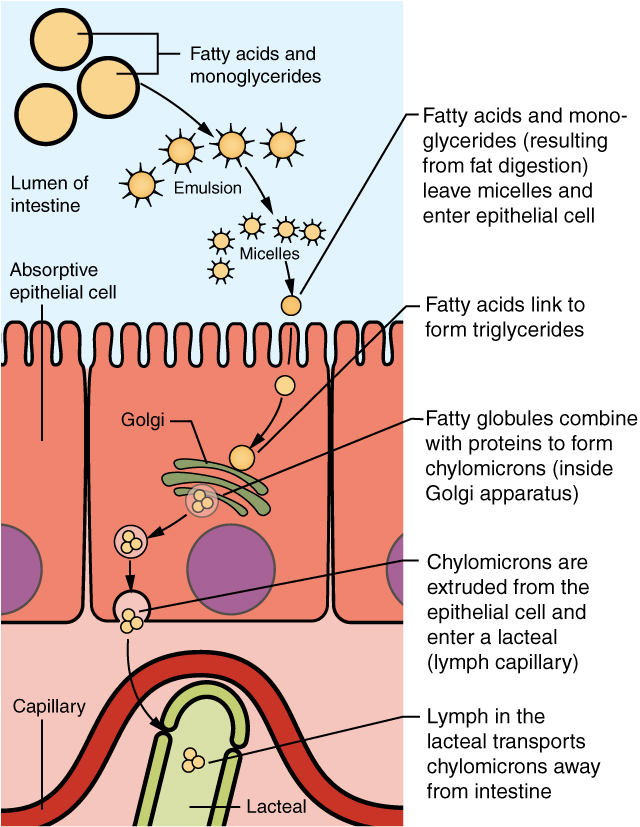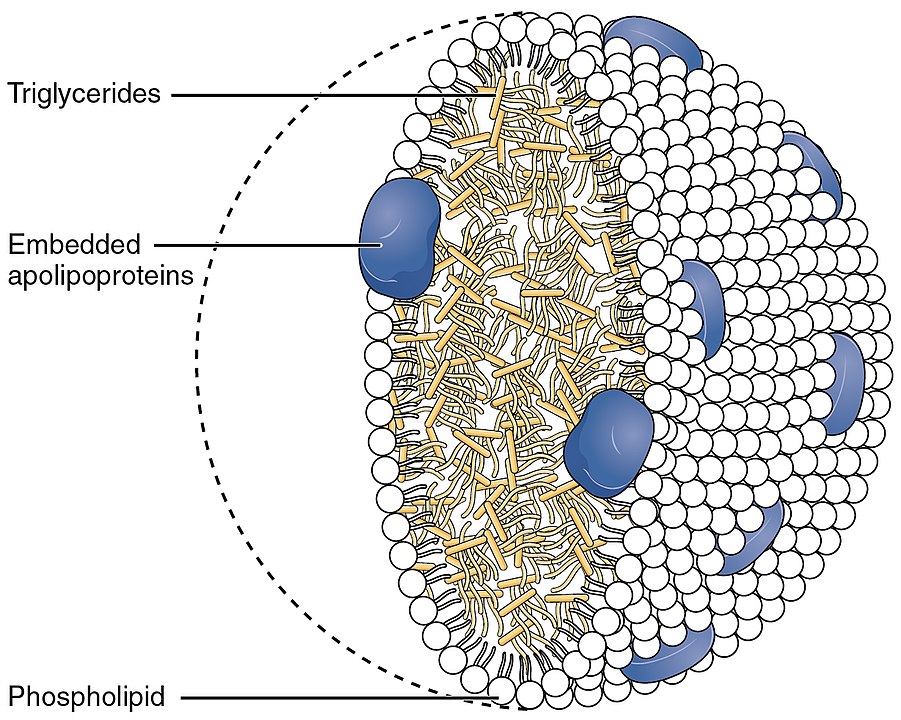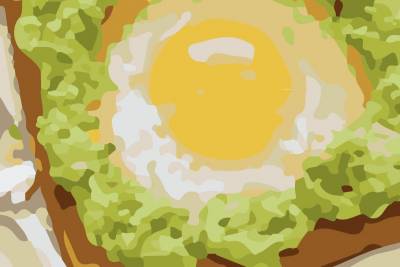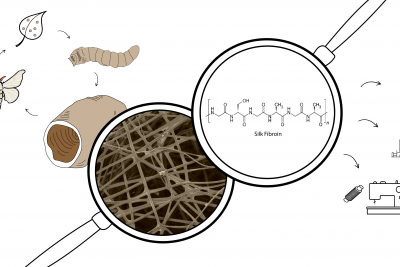Case Study: Lipid Emulsions and Parenteral Nutrition
Background
Macronutrients such as carbohydrates, protein, and fat (lipid), are essential components of the human diet. Under normal circumstances, people are able to obtain the majority of these macronutrients by eating healthy foods. Our bodies ultimately absorb macronutrients from food in the small intestine, but not before our digestive processes prepare these macronutrients into absorbable compounds. For example, ingested dietary fat cannot just enter the small intestine — it is first acted on in the mouth, where mechanical and enzymatic processes begin to emulsify dietary fat, which is further acted upon in the stomach, also by enzymes and mechanical processes.

Figure 1: Lipid absorption process (source: wikimedia)
Once stomach contents are transferred to the small intestine, these partially emulsified dietary fats are exposed to bile, which finishes the emulsification process. Fully emulsified fat particles can now pass into the cells lining the small intestine, where they are packed up into tiny spheres of protein and fat called chylomicrons.

Figure 2: Chylomicron diagram (source: wikimedia)
From there, chylomicrons enter the bloodstream, allowing for the delivery of lipids to our tissues.
What happens when someone experiences issues with digestion and nutrient absorption?
There are instances of diseases or disorders related to impaired gut function that make it difficult or impossible for people to obtain adequate nutrition. When a patient is challenged by these issues, a common treatment is to supplement them through intravenous administration of nutrients, otherwise known as parenteral nutrition (PN). A major component of PN mixtures include Intravenous Lipid Emulsions (ILE), which provide patients with a source of essential fatty acids and non-protein calories. However, long-term use of ILEs has been associated with intestinal complications and liver disease. As such, scientists and clinicians have been working to engineer a better recipe for ILEs that can provide needed nutrition without harm.
Note: because PN is delivered through an IV, this mode of feeding bypasses the normal digestion processes that take place in the gastrointestinal tract. Instead, the ILEs contained in the PN are absorbed and processed by the small intestine and liver.
Reflect & Relate
What considerations do scientists and clinicians have to take into account when designing ILEs for nutrient delivery? How do people normally absorb fats? Think about the size and composition of chylomicron particles.
How are ILEs similar to chylomicrons that are normally produced by digestive processes? How are they different?
How does ILE absorption differ from chylomicron absorption?
How does the lipid composition and type of emulsifying agent impact the effectiveness of ILE delivery?
How can long term ILE use potentially impact the intestinal and liver health of patients?
What other aspects related to emulsions are important to consider in this context?
How can this relate to classwork in your setting?









